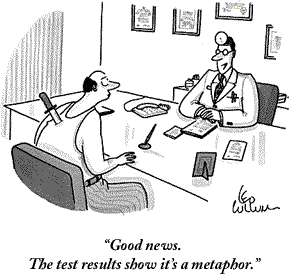by James Scott Bell
@jamesscottbell

Today’s first-page critique provides an opportunity to discuss the nuts and bolts of the basic unit of novel writing—the scene. Let’s have a look the opening and take up this crucial craft matter on the other side.
He wrote on the back of a postcard.
“I’m in Oaxaca (Pronounced “Wah-Hah-Kah”) Mexico,
on the first Tuesday in February. I’m enjoying very
warm days, very hot food and good cold beer.
Wish you were here.
Frank.”
23 year old Frank Sandrell thought;
This new El Cacique Premiero of the Aztecs received his Investiture on New Years Day. He’s been going around the Country, performing sacrifices in all the major Cities. He arrived in Oaxaca today, just like I did. While I’m here, he’ll actually be immolating a devout Aztec maiden under the midday sun; presenting her as an offering to Los Teochacos, keeping them satisfied, so they will continue “to sustain the World and all that is therein”.
Local people from all over the region had been crowding into the city to witness the event; so had a very large number of turistas. Not one hotel room in town was now available. Frank was glad he’d made all his reservations back in October.
The time was around 8 in the evening. The postcard he’d just signed lay on the table beside a painted glass lamp containing a burning candle. He sat in an outdoor restaurante, beneath the ceiling of a brightly lit arcade, across the street from the Main Plaza of Oaxaca Mexico. The local people called the Plaza “El Zocalo”.
Frank was seated alone, having a dinner of chicken burritos, rice, and refried beans, along with a mug of Tres Equis beer. The sound of performing mariachis came from tables at the far end of the arcade. They sang the traditional “Los Tres Caballeros”. Across the street in the Zocalo, a different band performed “Guadalajara”. The different tunes performed at the same time filled the warm evening air with melodious confusion.
At the table next to his, three stylishly dressed Oaxacan girls in their late teens sat chatting amiably while drinking beer of the Bohemia brand. They had straight black hair, tan complexions and full, firm figures.
One of the girls called out and pointed. “Mira! Hay El Cacique Premiero!”
Everyone in the seats around them looked where she was pointing. Frank saw an unsmiling, casually dressed middle aged Mexican hombre, with thinning hair and glasses, moving around the tables in the arcade. If he hadn’t been pointed out, Frank would not have noticed him.
As the man walked past the stylish girls’ table, the three spoke respectfully. “Buenas noches Cacique.”
He replied, still not smiling. “Buenas noches senoritas.”
He continued moving past the other tables, where all the local people respectfully greeted the Supreme High Priest of all the Aztecs.
# # #
JSB: Okay, we’ve got some work to do. I see two promising things in the material: a) the setting (Oaxaca); and b) the potential strangeness of an Aztec priest in the modern world, performing sacrifices yet!
The problem with this page is that the material is front loaded with exposition (i.e., story information the author wants the reader to know), and what minimal action there is comes too late, with too little to keep us interested.
Write this down and stick it near your computer: It is not information that captures readers. Nor is it characters. It is characters in motion toward an objective.
That is what a scene must have—one or more characters who want something, even if (as Kurt Vonnegut suggested) it’s just a glass of water.
Since you seem new to fiction writing, I’d like to provide you with a scene template. As you grow in the craft, you will learn how to riff within this basic structure. But you can’t play jazz piano without first learning the scales, right?
A scene has three component parts: Objective, obstacles, and outcome.
Objective
A novel is about a character using strength of will to attain a crucial objective. For example, in the movie The Fugitive the wrongly convicted Dr. Richard Kimble must avoid being captured, or he’ll be sent to Death Row for a murder he did not commit. To exonerate himself—and get justice for his murdered wife—he needs to stay free long enough to find the one-armed man who killed her.
Now, each scene in the film has a sub-objective that connects somehow to the big one. Thus, early on, the wounded Kimble has to sneak into a rural hospital and treat himself, without arousing suspicion. Later he poses as a janitor in a hospital in Chicago with the objective of gaining access to the records of the prosthetics wing. Why? So he can get a list of one-armed men to track down.
Obstacles
Conflict and tension are the lifeblood of a scene. When the viewpoint character is confronted with obstacles to gaining his scene objective—in the form of opposing characters, physical barriers, time pressure, or all three—things get tense.
In the rural hospital scene from The Fugitive, Kimble must sneak past the loading dock and find a treatment room. After stitching himself up, he needs to shave off his beard and steal some clothes. He does this in the room of a patient who is out like a light. But a nurse walks into the room! And a state trooper has arrived because Kimble might be in the area! The tension mounts as we worry about his cover being blown at any moment.
Outcome
A scene has to end at some point, and needs to answer the question: did the viewpoint character realize his objective?
The answer can be: No, Yes, or Oh my gosh!
A NO answer is always a good default, because it makes the character’s situation worse. When a character is set back in his quest, the reader’s worry mounts. And that is what readers want to do: worry about characters in crisis all the way to the end.
A YES needs to happen on occasion, but when it does, brainstorm how it can lead to more trouble. For example, in the scene in The Fugitive where Kimble poses as a janitor, he is temporarily stuck on a crowded trauma floor. He spots a little boy in distress. When a doctor tells him to take the boy to an observation room, Kimble has a scene objective: Help this boy! As he pushes the gurney Kimble sneaks a look at the X-rays and the chart, and starts asking the boy diagnostic questions. He determines the boy needs surgery right away. In the elevator he changes the orders and takes the boy to an operating room. He alerts a doctor and shows her the orders. The boy will be saved! That’s a YES answer. However, his earlier look at the X-rays was seen by the doctor who asked him to help. She confronts him and calls security. Now Kimble is outed and has to get out of there! He’s in worse shape because of his good deed.
An OH MY GOSH! scene ending means you leave the situation temporarily unresolved (a “cliffhanger”) and cut to another scene (perhaps with another viewpoint character). If you write in First Person POV or Limited Third Person (meaning one viewpoint character throughout the book) you can end a chapter on a cliffhanger and take up matters in the following chapter.
That’s basic scene structure.
Now we have to discuss how you get into a scene. This is, of course, crucial for opening pages, but no less so for any scene you write. So I’ll give you a template for this as well. Learn it, know why it works, then, as I mentioned, you can begin to play around with it.
First thing I want you to do is put the name of the viewpoint character in the first paragraph of every scene you write. Also, give us an indication of the setting and some kind of action.
Here is the first line of Harlan Coben’s Missing You:
Kat Donavan spun off her father’s old stool, readying to leave O’Malley’s Pub, when Stacy said, “You’re not going to like what I did.”
See that? Named character, setting, and action. (Here’s another tip that will help you enormously—in general, get to dialogue as soon as possible. That forces you to write in scene style.)
In a happy coincidence, here’s the opening line from yesterday’s first-page critique:
The instant her helicopter touched down, Francine threw the door open, leaned out, and shouted, “Any survivors?”
So how about this for your opening line:
Frank Sandrell was about to take another pull on his Tres Equis when a girl at the next table shouted, “Mira! Hay El Cacique Premiero!”
See how much better that is? The first thing readers look for in a scene is the who. Give them that up front. This line also has an indication of setting (drinking beer and next table imply a café; the Spanish language alerts us to a foreign place).
Next, drop in some details on the setting and situation in the thought-voice-attitude of the character. Here is the next paragraph from Coben’s novel:
O’Malley’s used to be an old-school cop bar. Kat’s grandfather had hung out here. So had her father and their fellow NYPD colleagues. Now it had been turned into a yuppie, preppy, master-of-the-universe, poser asshat bar, loaded up with guys who sported crisp white shirts under black suits, two-day stubble, mansacped to the max to look un-manscaped. They smirked a lot, these soft men, their hair moussed to the point of overcoif, and ordered Ketel One instead of Grey Goose because they watched some TV ad telling them that was what real men drink.
What you have to note here is that the above description is filtered through the voice of the POV character. This is how Kat thinks of the place and the men in it. Thus, your assignment is to take some of the essential info in your page (e.g., Oaxaca, mariachis, brightly-lit arcade) and weave it into a paragraph with Frank’s voice and attitude.
The next part of the template: Somewhere within the first page of your scene make it clear what the character’s objective is. I’m not sure what Frank’s is except that it has something to do with this Aztec priest guy. What about him? Does Frank want to kill him? Learn from him? Take his power for himself?
Next: brainstorm various obstacles to that objective. Go to town with this before you write any scene. Often (most of the time?) our mind first comes up with familiar tropes, because that’s what we’ve seen in countless books and movies. Take time to come up with something fresh. Make a list of possibilities then choose the best ones.
Lastly, you decide what the outcome is going to be. Brainstorm this part, too. You may decide to change it in the course of writing the scene, and that’s perfectly fine. But you need to write your scene with a destination in mind.
Whew! That’s a lot to work on, I know. But it’s absolutely necessary for your development. Because a successful novel is a series of scenes, none of which are dull. It’s a high bar, but we’re not peddling peanuts on the street corner here. We’re attempting to transport impatient and distracted readers into a fictional world and hold them there for the duration!
Let me end today’s lesson with a few style notes:
He wrote on the back of a postcard.
“I’m in Oaxaca (Pronounced “Wah-Hah-Kah”) Mexico …
The disembodied “He” writing on a postcard did not create a picture of a character for me. The message, too, was a bit odd. Would a guy writing a postcard really use up valuable space giving the pronunciation?
Further, don’t put quotation marks around written text. That should be called out via italics, a different font or a block indentation.
23 year old Frank Sandrell thought;
Never begin a sentence with numerals. It should be: Twenty-three-year-old Frank Sandrell thought …
And you meant to use a colon, not a semi-colon. That’s a typo, obviously, but a big one, because I don’t want to see you use a semi-colon in fiction ever!
This new El Cacique Premiero of the Aztecs received his Investiture on New Years Day. He’s been going around the Country, performing sacrifices in all the major Cities. He arrived in Oaxaca today, just like I did. While I’m here, he’ll actually be immolating a devout Aztec maiden under the midday sun; [AHHH!!!] presenting her as an offering to Los Teochacos, keeping them satisfied, so they will continue “to sustain the World and all that is therein”.
This doesn’t sound like a real thought. It’s exposition from the author. Note: interior thoughts are generally short, a line or two. Otherwise it tends to sound fake. Rework these sections so the thoughts sound like the character’s voice in that particular moment.
Also, that last quote looks odd. It’s supposed to be the Aztec priest, I guess, but it throws us. Try not to do that. And, of course, the punctuation always goes inside the quote mark.
The time was around 8 in the evening.
As a general rule, spell out numbers from zero to one hundred. Thus: The time was around eight in the evening.
This can be a confusing style issue, but here’s one helpful article you can refer to.
One of the girls called out and pointed. “Mira! Hay El Cacique Premiero!”
When a foreign language is spoken by a character, render it in italics. Thus:
One of the girls called out and pointed. “Mira! Hay El Cacique Premiero!”
That’s enough for today, writer! I hope it helps. Write, learn, edit, rewrite, get feedback.
Repeat …
Your turn, Zoners. Any other advice for today’s writer?






